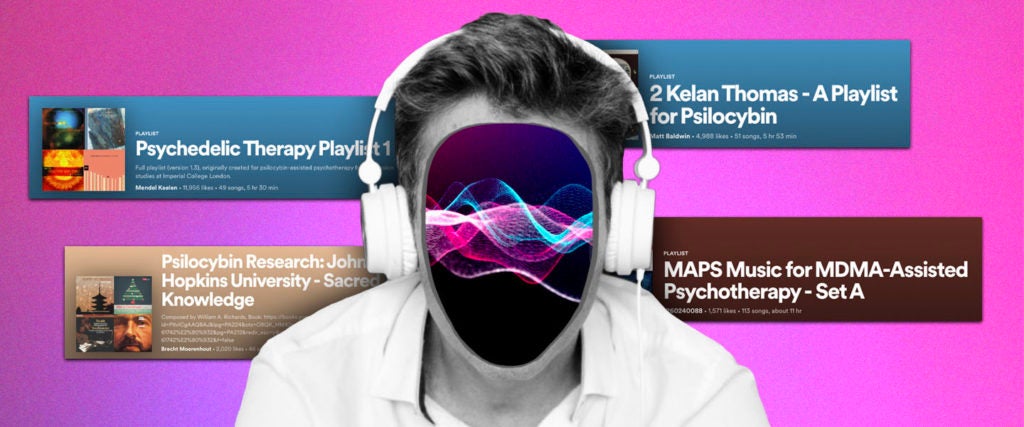It’s hard to imagine something that has more potential power than a psychedelic drug: It can make you relive memories, hallucinate visions of parallel universes and feel sensations that don’t exist in the physical world around you.
Everyone’s experience during a trip is different. Sometimes, the journey is just about submerging yourself in a serene sense of joy. Other times, it goes further, allowing you to dissociate and observe the world as an omniscient soul. No matter the psychedelic, with the right guidance, you can peer through the veil of existence, and grasp something that feels like real insight.
The profundity of the experience is why there’s a tidal wave of attention on the therapeutic uses of drugs like MDMA, ketamine, psilocybin mushrooms and LSD, all of which are being studied as treatments for depression, anxiety and addiction. Long demonized since their rise in the 1960s as brain-melting hippy chemicals, psychedelics are now in the spotlight as a revolution in mental-health treatment. Case in point: In the last few years, experimental clinics have opened across the country, offering legal IV drips in a comfortable space.
It’s easy enough for me to imagine the experience: I’ve taken my fair share of psychedelics recreationally, both in the chaos of a music festival and in the quiet of my own apartment. But what I can’t imagine is showing up to a clinic as a total newbie, nervous and unprepared for the trip. What the hell are you going to do while tripping in an overstuffed chair for five hours?
The answer: Turn on the curated Spotify playlist, obviously!
Yes, you can boot up your own jams during a psychedelic drug clinic visit, if you already have your favorite records lined up on your phone (I’m fond of kicking trips off with Air’s Moon Safari). I was surprised, however, to learn that researchers have been using their knowledge of the “phases” of a psychedelic trip to make soundtracks aimed at a therapeutic experience.
There are playlists from the Johns Hopkins Center for Psychedelic & Consciousness Research, Imperial College London, the Usona Institute in Wisconsin, the pioneering nonprofit MAPS and Chacruna, among others. The common thread among all of them is that they’re built on beautiful, sweeping songs that have a spiritual energy and flow gently between genres.
Experts already know that pairing music to drugs can be transformative, guiding the mind as it seeks stimulation. As psychologist Bill Richards, who curated the Johns Hopkins playlist, said last year: “We’re exploring the human psyche, which might take you through some painful things in childhood. It may take you into some archetypal or visionary realms that you never knew were possible. It might take you beyond usual consciousness into a realm that feels eternal.”
As you might imagine, the most common kinds of music in these playlists are classical and New Age, featuring artists such as Bach, Arvo Pärt, Paul Horn and German New Age pioneer Deuter. Each soundtrack, however, has a different flavor because of the way they’re sequenced, and listening to them over the course of the week has led me to a series of musical discoveries.
I love the sounds of the Texas experimental duo Stars of the Lid, which feature prominently in the Imperial College playlist. MAPS highlights Han Zimmer’s haunting work in the Vietnam drama The Thin Red Line. I haven’t listened to Brian Eno in years, yet his inclusion in the Usona Institute’s playlist makes perfect tonal sense. My favorite of all might be researcher Kelan Thomas’ handcrafted playlist for Chacruna, which takes a more modern bent with songs from Sigur Rós, Mogwai and Aphex Twin.
Regardless of the genres at hand, there is a long history of people using music to guide their ceremonial drug use, especially within the indigenous communities that pioneered the use of plants like peyote and psilocybin. Although it’s a short listen, this 1956 recording of mushroom ceremony songs by the Mazatec Indians is one of the most intimate and inspiring forms of “trip music” I’ve ever heard. The same goes for this varied YouTube playlist of ayahuasca songs, which has hours of hypnotic chanting and singing by shamans.
The key point here isn’t merely that good music makes a trip better — it’s that music of any kind provides a canvas for your brain to paint. “Normally when I hear a piece of sad music or happy music, I respond through choice… but under psilocybin I felt almost that I had no choice but to go with the music. … I did feel I was being held. And it did feel like the music opened [me] up to grief, and I just was very happy for that to happen. It wasn’t particularly pleasant in any way, but extraordinarily powerful,” one study participant reported in 2018.
I wouldn’t normally think to put this array of artists on in the background as I work, but the length and coherency of these psychedelic clinic playlists seems to trigger a mellow flow state. Maybe it’s my body remembering the sensation of trips in the past — or, perhaps more likely, Enya and Bill Evans just make for a great vibe.
That we’re now seeing Spotify playlists paired to legal psychedelic experiences is a turning point for American drug culture, and a harbinger of a psychedelic renaissance on the horizon. It’s a small thing that makes me hopeful for how these miracle substances can help reshape our lives, and the fight is on to make access to treatment equitable, rather than a plaything for the investor class.
No matter the outcome, though, we’re going to need more trip music. I even feel inspired to make my own playlist, after hours of listening to the pros and imagining myself in a clinic, drifting toward peace.

